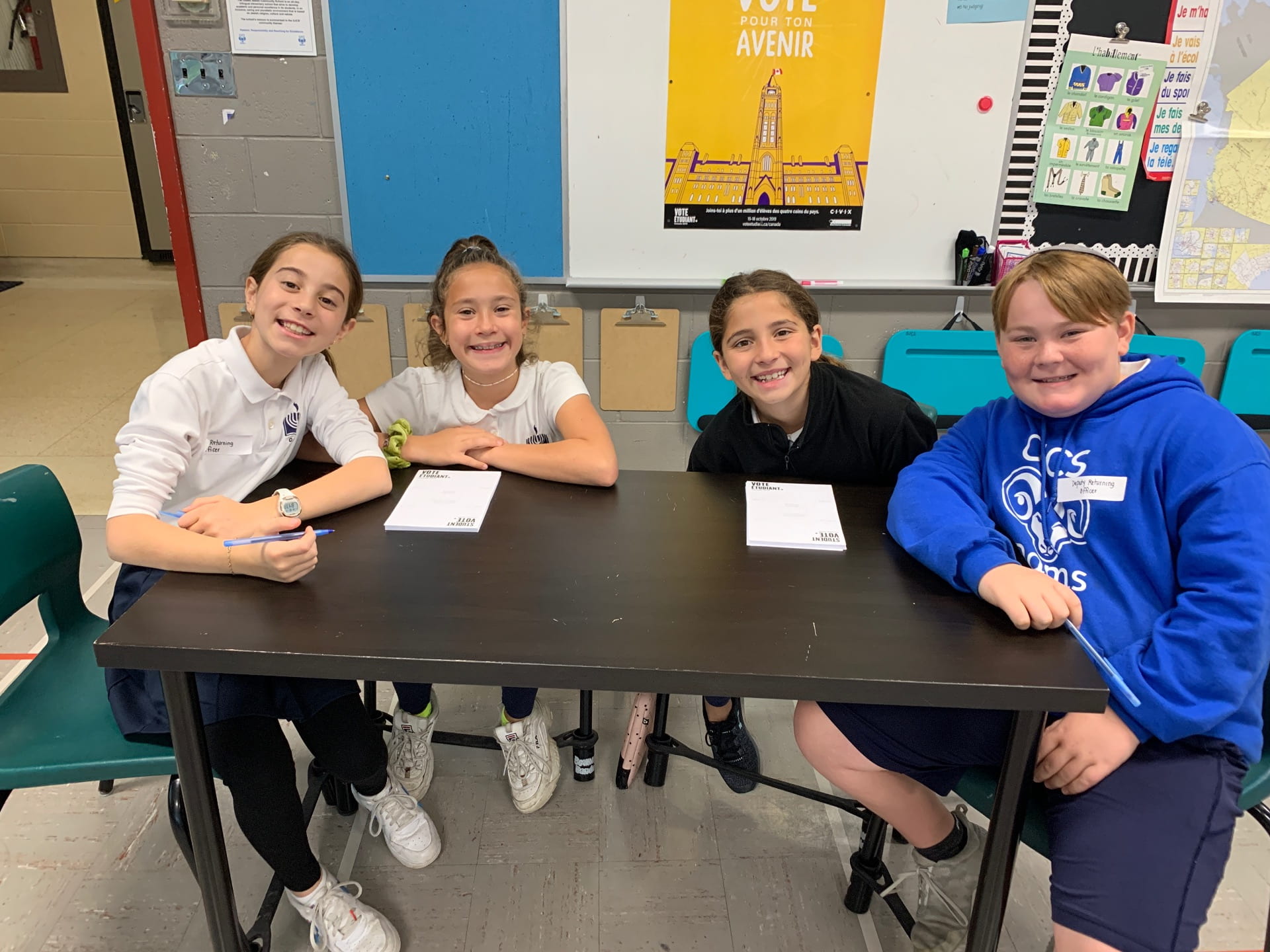We are about 1/4 of the way through our major French consultancy with the Centre Franco-Ontarien de Ressources Pédagogiques (Franco-Ontarian Centre for Educational Resources) or CFORP to implement the TACLEF program at the Ottawa Jewish Community School. (Please know that our work with TACLEF is generously supported by a grant from the Jewish Federation of Ottawa.) We thought it was an appropriate time to share back a little about what impacts the training has had, thus far, on our French faculty and program. If you want a reminder or a refresher on why we felt it necessary to engage this consultancy and what its aims and deliverables are, I encourage you to read the post from last year that describes it great detail.
Instead of my usual delivery, I thought it would be more helpful to frame this discussion as an edited “Q & A” that I had with our senior-most French teacher, Mr. Cinanni, who teaches Middle School Extended French at OJCS.
How has the consultancy impacted your ability to assess students?
It has allowed us to focus on reading, writing and oral communication in equal parts, which we have not always been able to do (or even thought possible). We have definitely adjusted evaluation methods since beginning with TACLEF.
How has the consultancy impacted your ability to differentiate or personalize the learning?
It completely supports us in doing so. Each student has his/her own strengths and weaknesses, and TACLEF – if used properly as an assessment tool – will identify these and then offer (almost too) many suggestions on how to work on those weaknesses. We have also noticed that there may be groups of students who share the same gaps (e.g. a lack of “enriched vocabulary”) which allows us to prepare activities/lessons that many students need and will benefit from together.
How has TACLEF impacted teaching and learning in your classrooms?
As stated, the greatest impact is ensuring that all three strands (reading, writing and oral communication) are built into almost every activity and evaluation. It has also given us new resources and strategies for delivery of instruction, classwork, and homework (in addition to evaluation).
How might TACLEF help us best prepare students for French immersion in Grade 9?
By providing us with a detailed roadmap, we can prepare all our students – particularly the ones who land in Extended French – as if they were going into French immersion. It is too soon to be more specific, but over the remaining 3/4 of the consultancy we will have greater clarity about how to adapt our program (with what supporting curricular materials we will need) to prioritize that outcome.
Is there anything else of consequence to note at this time?
We have already been able to use TACLEF assessments to better answer questions and concerns from individual parents and to better meet the needs of individual learners. It gives us a taste of what is to come, but we can already see that the quality of our conversations with parents has been elevated due to this work. We believe it will make the decision-making around Core/Extended placements more objective, more scientific and more successful.

On a related note, our annual alumni surveys for students in Grades 9 & 12 are going out in the next week or so. We like to wait until finals are complete because we think it helps (Grade 9) alumni (and their parents) better provide feedback on how well (or not) OJCS prepared them. We include a number of questions about French in those surveys and we will report back (either an update to this post or in some other way) what we learn.
If you have more questions or concerns about French at OJCS, please don’t hesitate to contact us. We know how important this topic is for a meaningful number of current and prospective families. It would be our pleasure to provide more detail in conversation.

On an unrelated note, with new admissions and re-enrollment packets now out, I want to strongly recommend that anyone who has questions about the financial side of things to please make an appointment with me to discuss. It is my role to shepherd families through the process and oftentimes I can help a family better navigate the system – particularly for folk who will be seeking tuition assistance. It would be my pleasure to sit with anyone to help better understand how the system works and what, historically, has best positioned families to be viewed in the most positive light. If this is a source of anxiety or concern for any family – or a reason why a family may or may not choose to enroll or re-enroll – I strongly urge you to come in for a private conversation. We have a long history of generosity that our donors, supporters and Federation have helped ensure and we will continue to work hard to ensure that financial considerations not be the determining factor for whether or not a child can receive a Jewish day school education.









 Vice Principal, Keren Gordon:
Vice Principal, Keren Gordon:






 As part of implementing our new
As part of implementing our new  Our Language Arts Faculty looked at
Our Language Arts Faculty looked at 















 We can’t wait to share the results with you, after the polls close for the rest of the country, on Monday evening. We will be counting the votes on Wednesday so stay tuned!
We can’t wait to share the results with you, after the polls close for the rest of the country, on Monday evening. We will be counting the votes on Wednesday so stay tuned!














